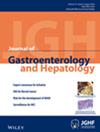Clinical Trial: The Optimal Timing of the Endoscope Insertion After Oral Lidocaine Spray. A Randomized Controlled Trial
Abstract
Background and Aim
Esophagogastroduodenoscopy (EGD) is a critical diagnostic tool for assessing upper gastrointestinal disorders, yet it can induce significant discomfort due to gag reflexes and pain. For patients with a higher risk for sedation, topical lidocaine spray at the hypopharynx is an alternative method. Yet, no standardized protocol exists regarding the optimal waiting period between administering lidocaine spray and commencing EGD. This study investigates the optimal waiting time between the application of topical lidocaine spray and the initiation of EGD to enhance patient comfort and procedural efficacy.
Methods
Conducted as a single-center randomized controlled trial at our hospital, the research involved 160 patients who were divided into two groups based on waiting times of 1 or 3 min postlidocaine application. Both objective and subjective discomfort levels were evaluated during the procedure. Objective discomfort assessment included the elevation of heart rate and systolic blood pressure. Subjective discomfort assessment included throat pain, nausea sensation, and abdominal fullness recorded from the patient’s questionnaire.
Results
The study indicated that a 3-min wait significantly reduced objective measures of discomfort, such as heart rate and blood pressure elevations, and subjective discomfort ratings, including throat pain and nausea. Furthermore, patients in the 3-min group expressed a lower willingness to undergo future sedated endoscopies, highlighting the importance of minimizing sedation-related risks in high-risk populations.
Conclusions
The study findings suggest that extending the waiting period after lidocaine administration improves patient outcomes during EGD, advocating for a standardized protocol of 3 min to optimize analgesia and procedural comfort.
Trial Registration
ClinicalTrials.gov identifier: NCT06497296

 求助内容:
求助内容: 应助结果提醒方式:
应助结果提醒方式:


